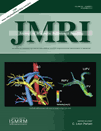Computer aided analysis of breast MRI enhancement kinetics using mean shift c lustering and multifeature iterative region of interest selection
Abstract
Purpose:
To evaluate automatic characterization of a breast MR lesion by its spatially coherent region of interest (ROI).
Materials and Methods:
The method delineated 247 enhancing lesions using Otsu thresholding after manually placing a sphere. Mean Shift Clustering subdivided each volume, based on features including pharmacokinetic parameters. An iteratively trained classifier to predict the most suspicious ROI (IsR) was used, to predict the malignancy likelihood of each lesion. Performance was evaluated using receiver operator characteristic (ROC) analysis, and compared with a previous prototype. IsR was compared with noniterative training. The effect of adding BI-RADS™ morphology (from a radiologist) to the classifier was investigated.
Results:
The area under the ROC curve (AUC) was 0.83 (95% confidence interval [CI] of 0.77–0.88), and was 0.75 (95%CI = 0.68–0.81; P = 0.029) without pharmacokinetic features. IsR performed better than conventional selection, based on one feature (AUC 0.75, 95%CI = 0.68–0.81; P = 0.035). With morphology, the AUC was 0.84 (95%CI = 0.78–0.88) versus 0.82 without (P = 0.40).
Conclusion:
Breast lesions can be characterized by their most suspicious, contiguous ROI using multi-feature clustering and iterative training. Characterization was improved by including pharmacokinetic modeling, while in our experiments, including morphology did not improve characterization. J. Magn. Reson. Imaging 2012;36:1104–1112. © 2012 Wiley Periodicals, Inc.




